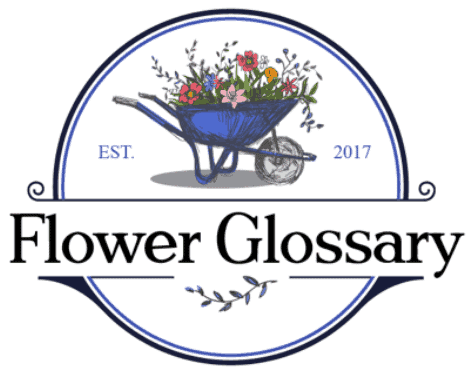Flower Glossary is reader-supported. When you buy through links on our site, we may earn an affiliate commission.
Learn about more than 40 types of red flowers including Amaryllis, Gerbera Daisies, Red Roses and more, plus find the optimal level of sun and soil type. Find the perfect red flowers for your garden, wedding or home.
Table of Contents
Alstroemeria
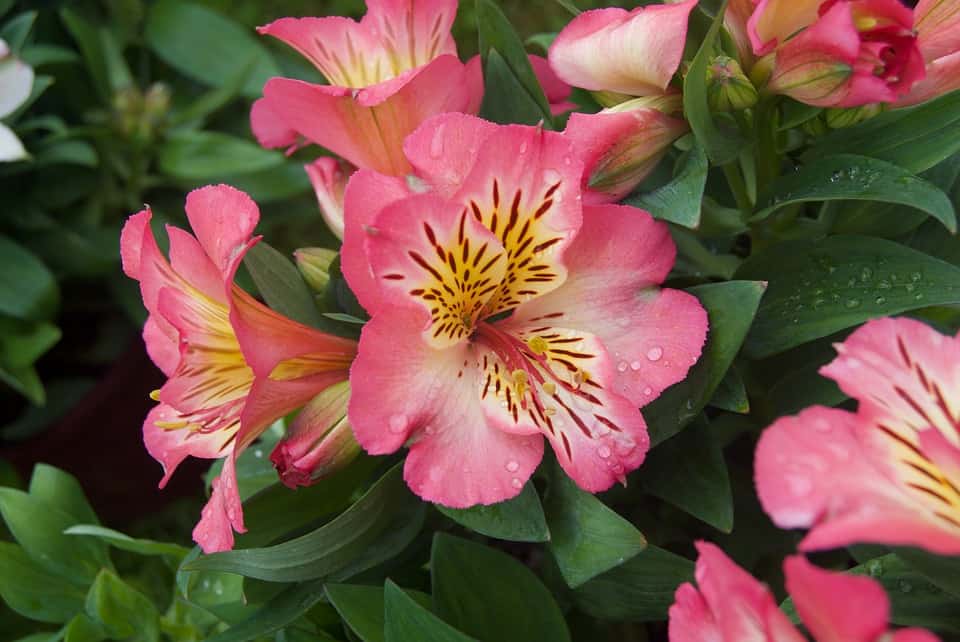
Commonly used by florists because of their large blooms and ability to be dyed, these are also a great addition to any garden. They are easy to grow and bloom all season long.
- Plant in full sun or partial shade.
- Needs well-drained soil.
- Grows in zones 8-10.
Amaryllis
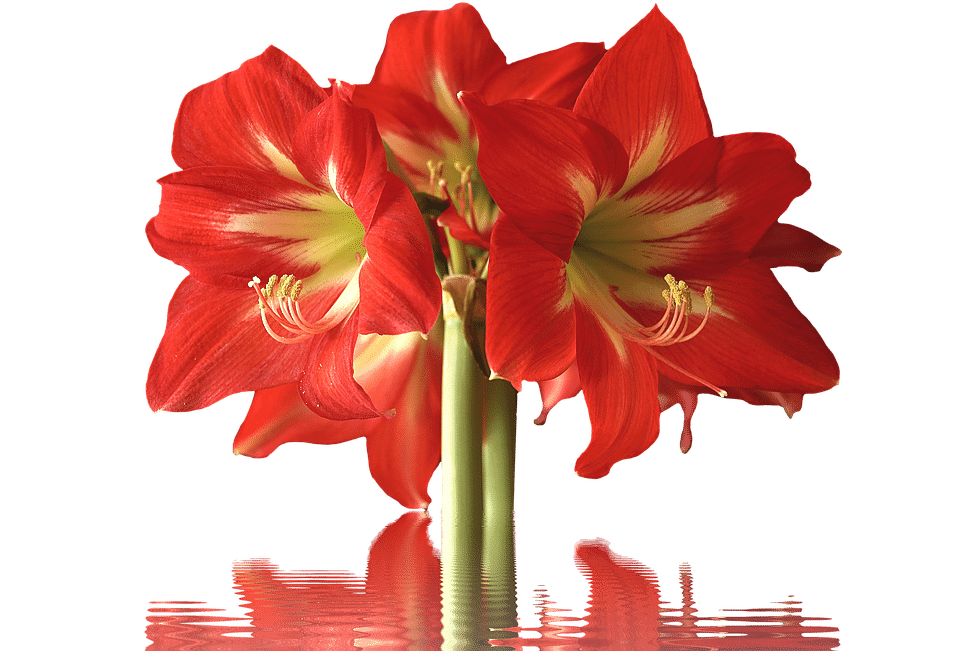
Known for the trumpet shaped bloom, these flowers have large blossoms that come in both red and white. These look great grown next to tulips and other bright flowers.
- Plant in full sun.
- Needs well-drained soil.
- Grows in zones 9-11.
Anemone
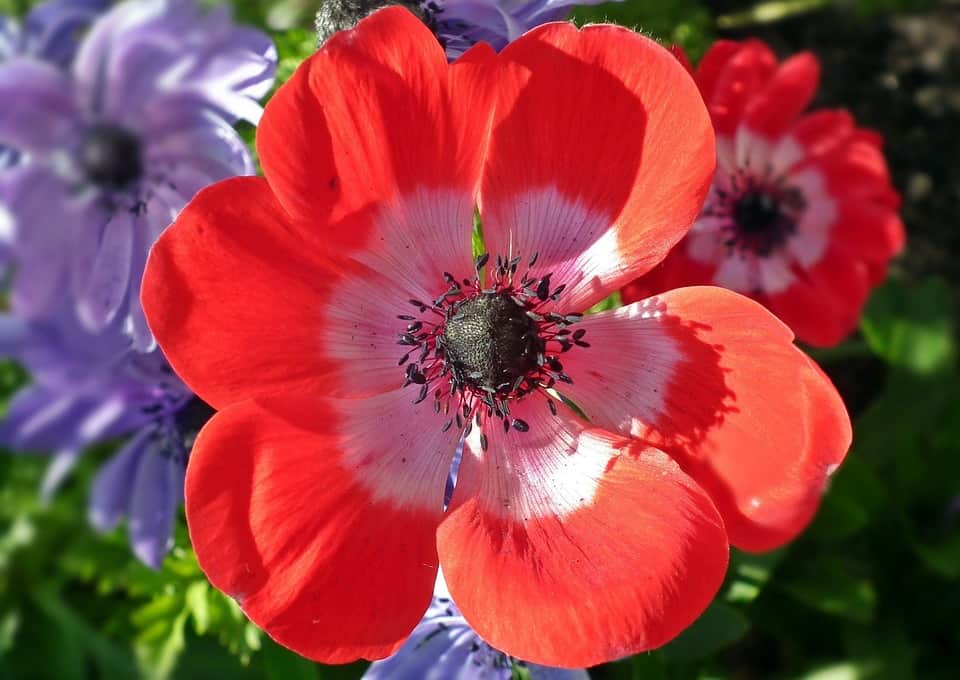
Also known as windflower, these tuberous flowers produce poppy-like blooms in early-to-mid spring. Plant anemones in full sun or part shade.
- Plant in partial shade.
- Needs moist, well-drained soil.
- Grows in zones 3-9.
Chrysanthemum
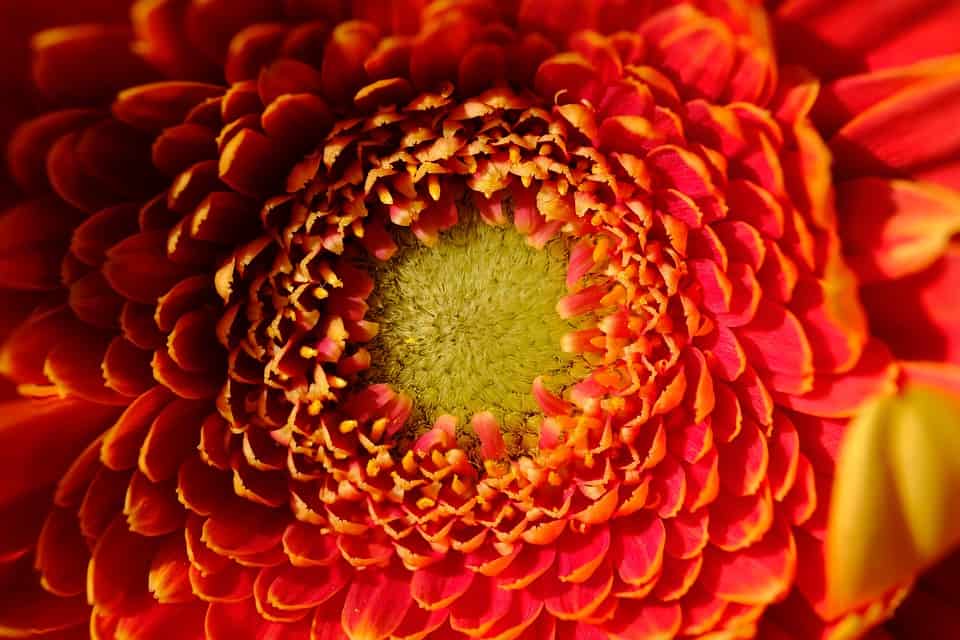
Also known as mums, they are generally grown as annuals in cold climates. These plants may produce dime-size pom poms to huge, daisy-like blooms.
- Plant in full sun.
- Needs well-drained soil.
- Grows in zones 3-9.
Marigold
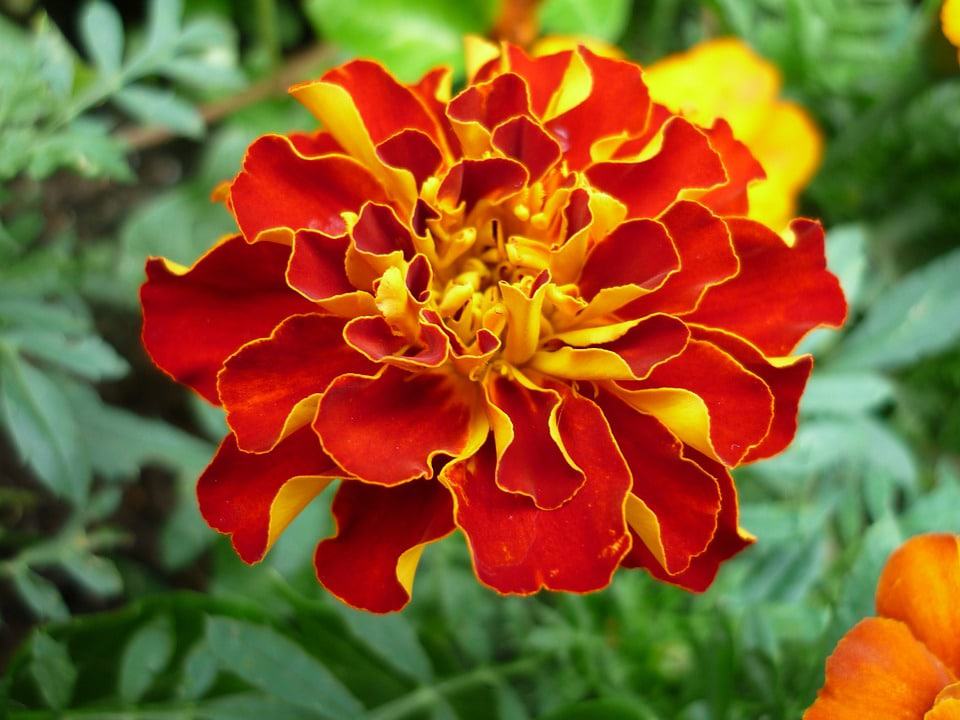
Marigolds have a distinct, peppery smell that some people find displeasing. The good news is that insect pests may also avoid the scent.
- Plant in full sun.
- Needs well-drained soil.
- Grows in zones 9-11.
Zinnia
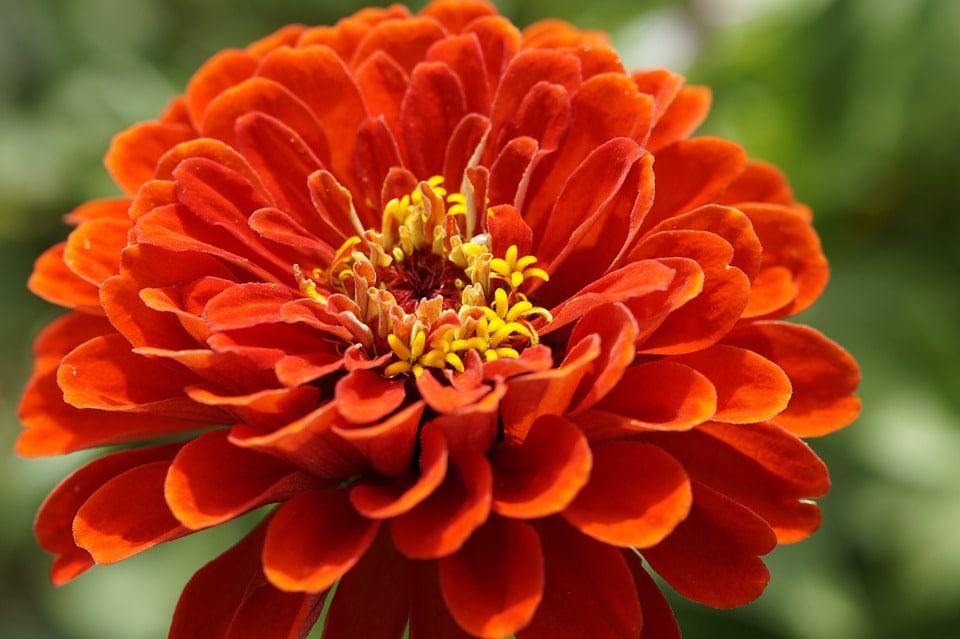
A packet of zinnia seeds will fill an area with gorgeous flowers in an amazing array of shapes and colors — even green! And it will happen in just weeks.
- Plant in full sun.
- Needs well-drained soil.
- Grows in zones 3-10.
Poppy
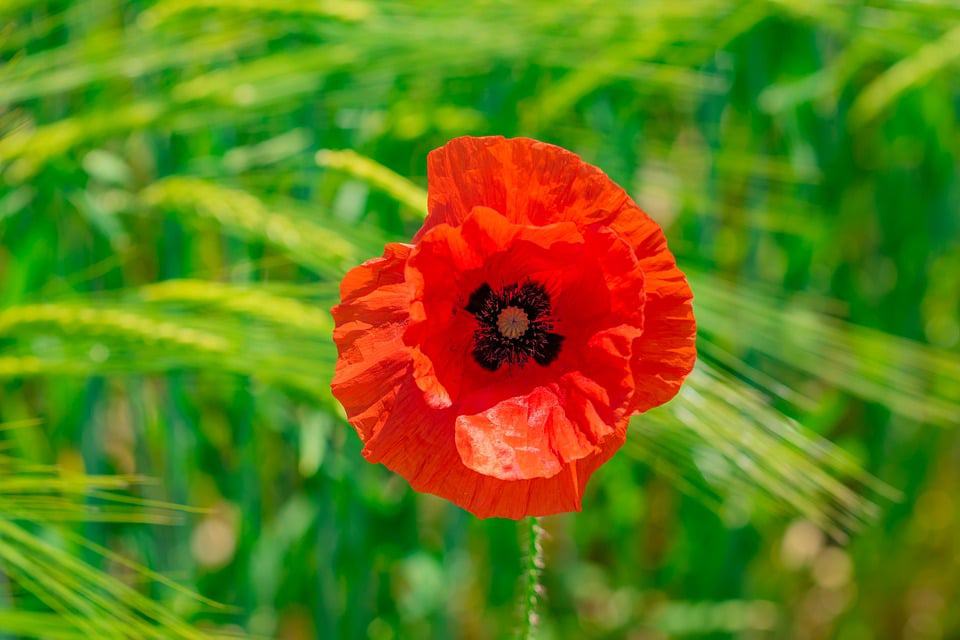
Oriental poppies produce showy red flowers in late spring or summer. If you live in England these are considered to be a very patriotic flower as they represent the lives lost in WWI.
- Plant in full sun.
- Needs well-drained soil.
- Grows in zones 2-8.
提前30分鐘服用犀利士20毫克,36小時輕鬆自由享受性生活。一般而言,犀利士服用劑量為10毫克,在預期性行為前服用,服用10毫克得不到適當效果時,可嘗試20毫克。
Red Rose
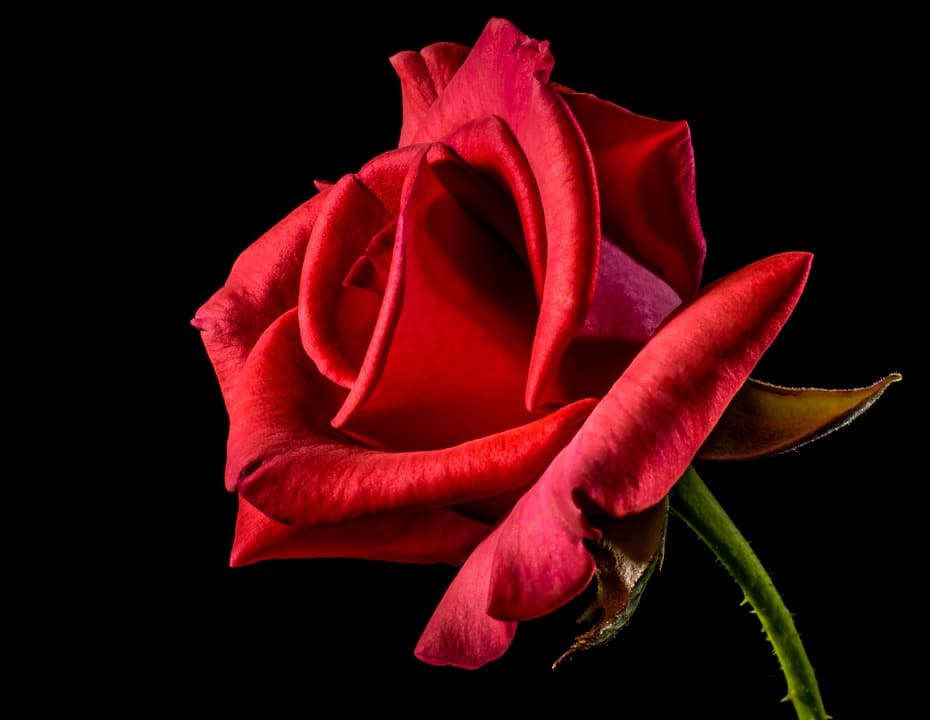
With over 2,000 types of roses, everyone is sure to find a type that will fit perfectly into their garden. The most important thing to remember about any kind of rose you plant is that it requires lots of sun. Learn about the meaning of red roses in our other article.
- Plant in full sun.
- Needs moist, well-drained soil.
- Grows in zones 3-11.
Lily
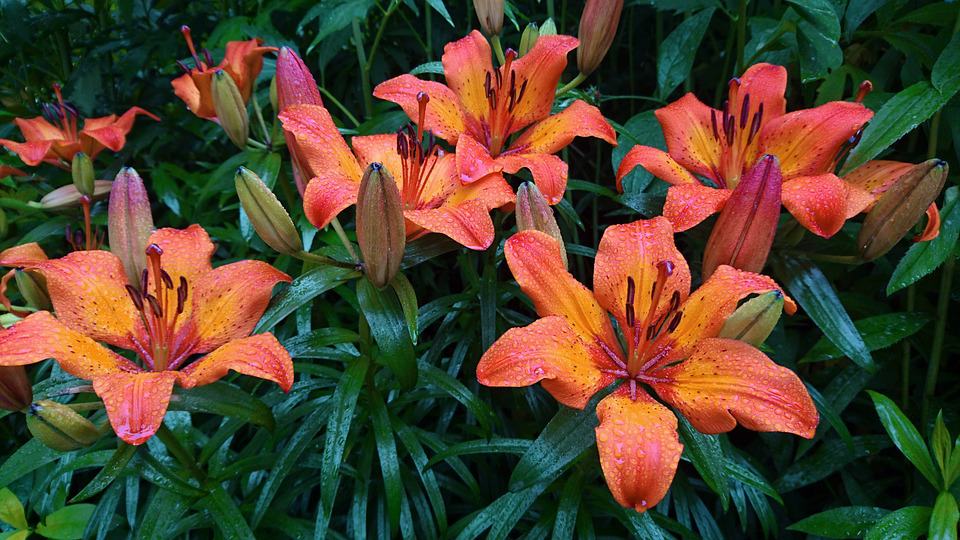
Lilies are often found growing along ditches and in fields, a testament to their low-maintenance style. Their large blooms make them very popular in spring time floral arrangements.
- Plant in full sun or partial shade.
- Needs moist, well-drained soil.
- *Grows in zones 4-8.
Calla Lily
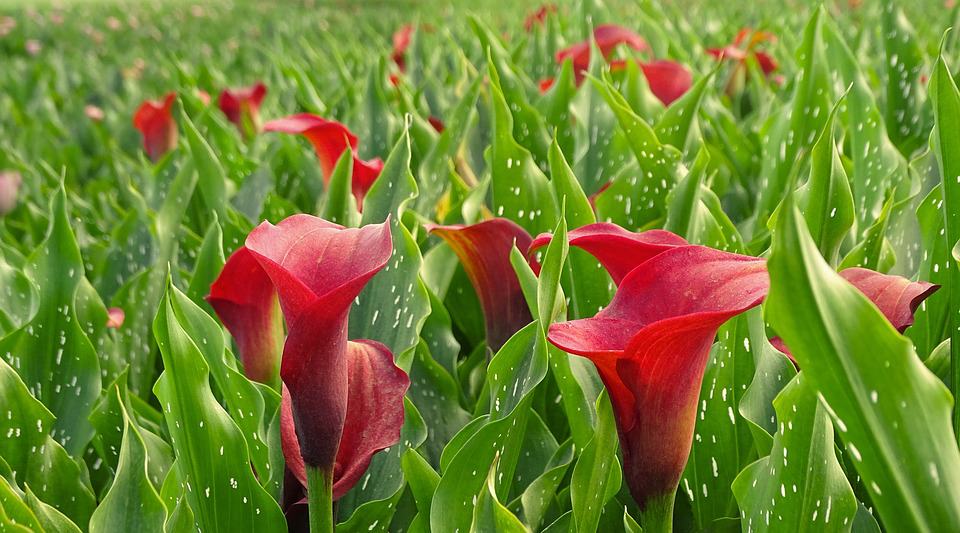
Known for their single petal bloom, calla lilies are a common cut flower given around Easter. These can be easily grown inside or outdoors.
- Plant in full sun or partial shade.
- Needs moist, well-drained soil.
- Grows in zones 8-10.
Red Tulip
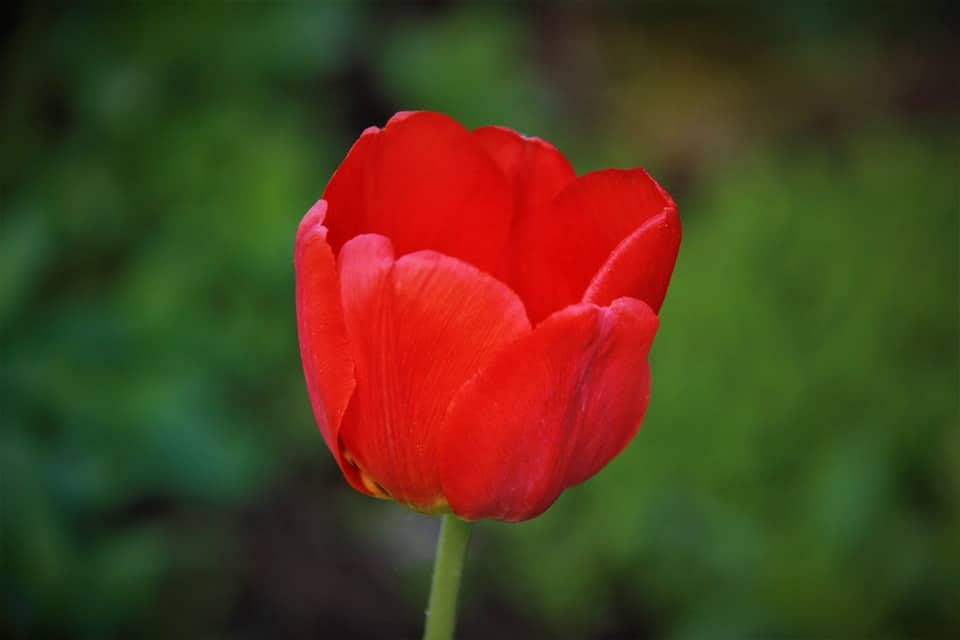
A large display of spring-blooming tulips makes a stunning and welcome statement when most other plants are dormant. Tulips come in a wide variety of colors and sizes.
- Plant in full sun or partial shade.
- Needs well-drained soil.
- Grows in zones 3-8.
Dianthus Caryophyllus
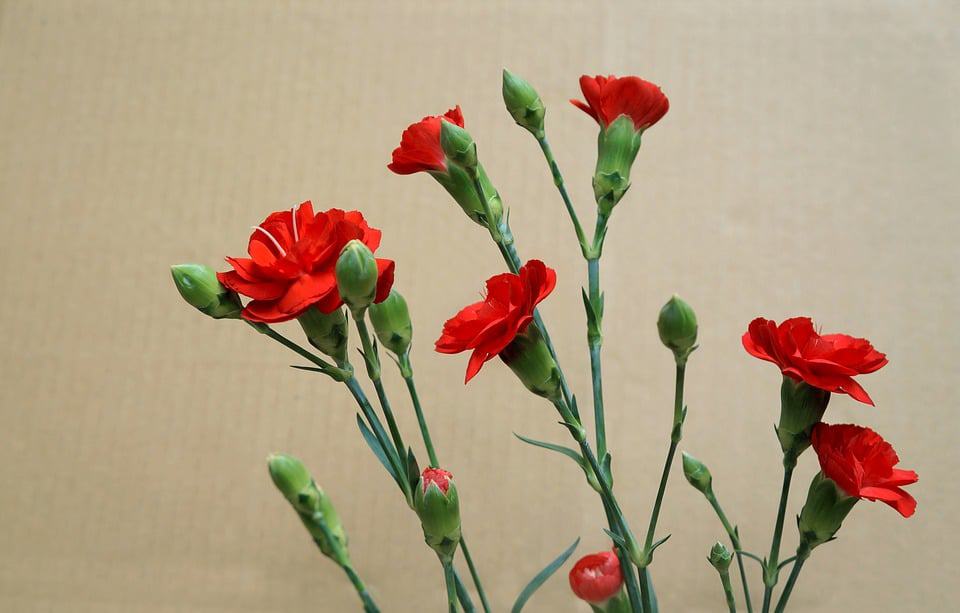
More commonly called a carnation, this bloom is very different than the one in bouquets and given as gifts. It has only 4 small thin petals and will only grow a few inches in height.
- Plant in full sun or partial shade.
- Needs moist, well-drained soil.
- Grows in zones 3-10.
Gerbera Daisy
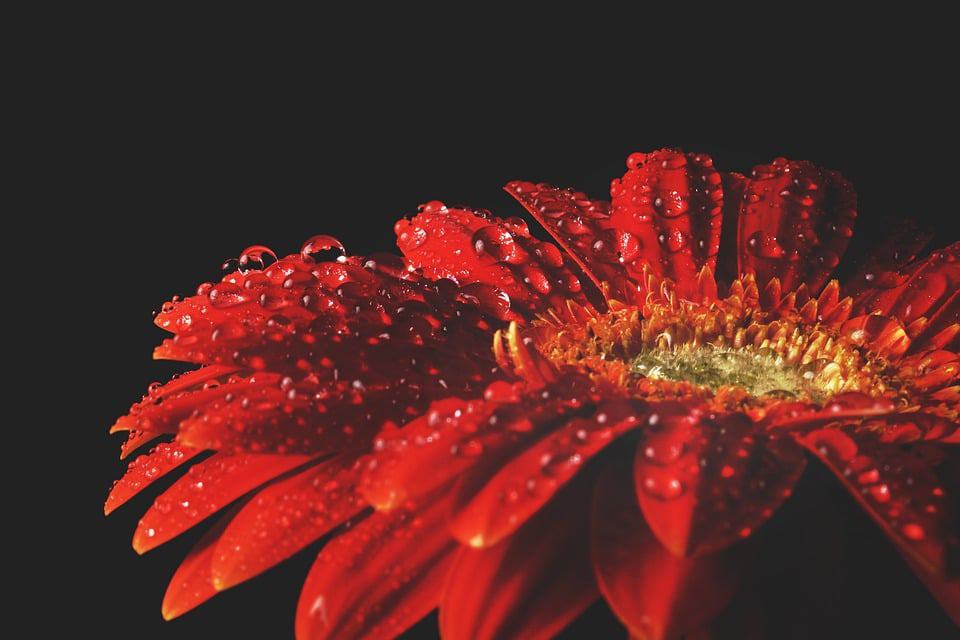
These big, bright flowers are often the mascot for floral arrangements. Popular due to both their size and colors, these are the perfect addition for any garden.
- Plant in full sun.
- Needs well-drained soil.
- Grows in zones 9-11.
Cockscomb
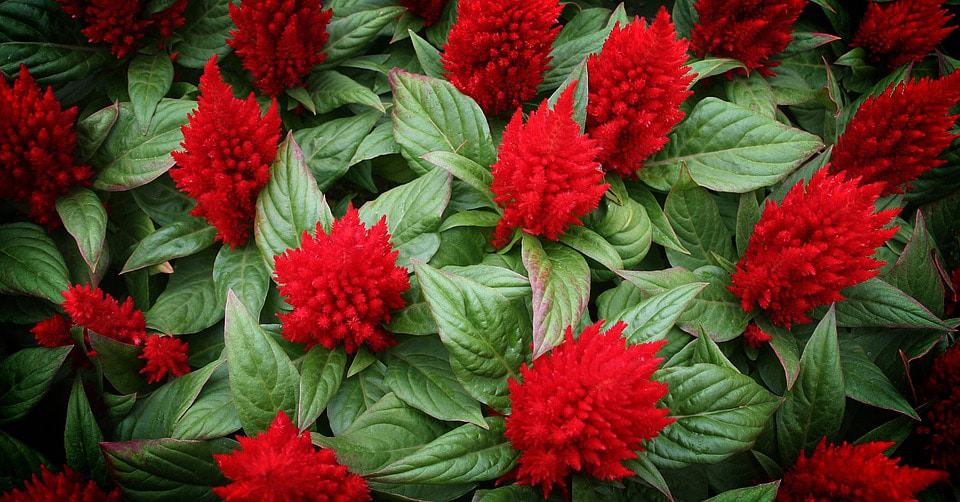
Cockscomb has an open, feathery cluster of flowers. The tightly clustered blooms are said to resemble a rooster’s comb, thus the name cockscomb. Flower colors include red, yellow, orange, gold, and pink.
- Plant in full sun.
- Needs well-drained soil.
- Grows in zones 2-11.
Peony
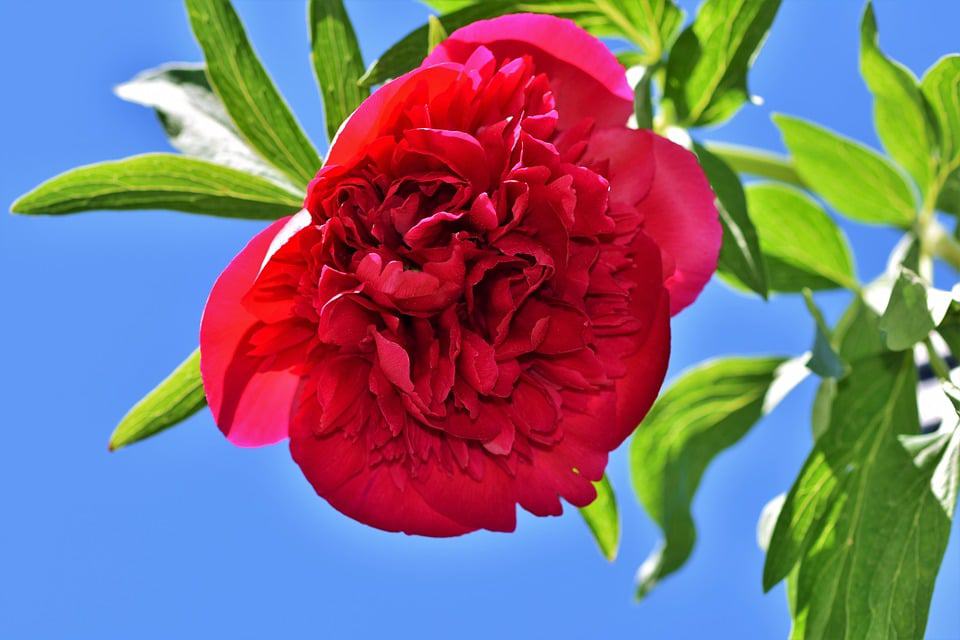
Old-fashioned peonies thrive in cold climates and don’t tolerate warm winters, although some new varieties are warm-region adapted. They take several years to become established and may require staking, but their beautiful, lush blooms are worth the wait.
- Plant in full sun or partial shade.
- Needs moist, well-drained soil.
- Grows in zones 3-9.
Begonia
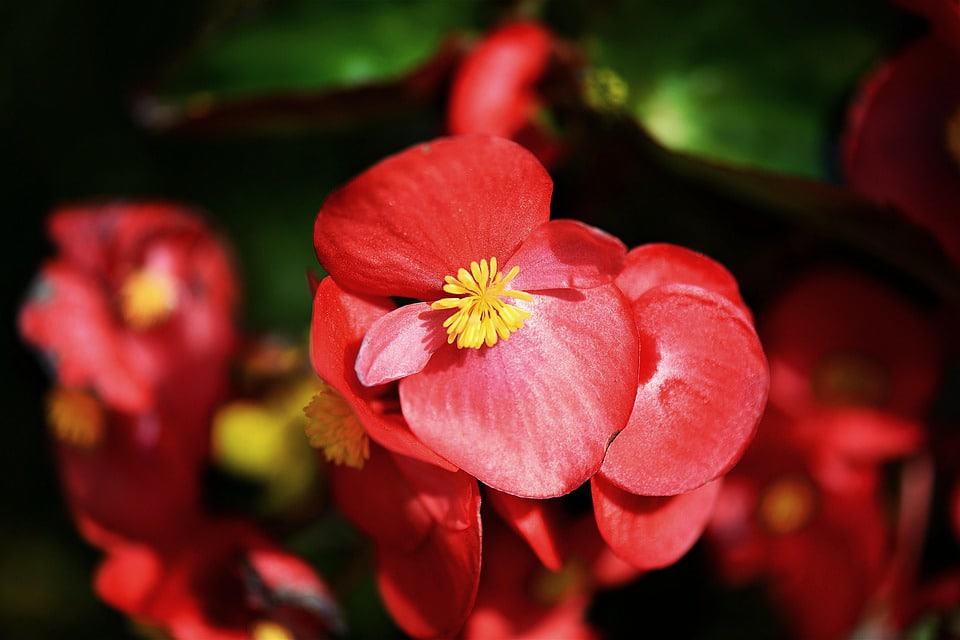
A flowering bush which has large double blooms and comes in many colors. These do best in climates with little wind.
- Plant in full sun or partial shade.
- Needs moist, well-drained soil.
- Grows in zones 6-11.
Pentas
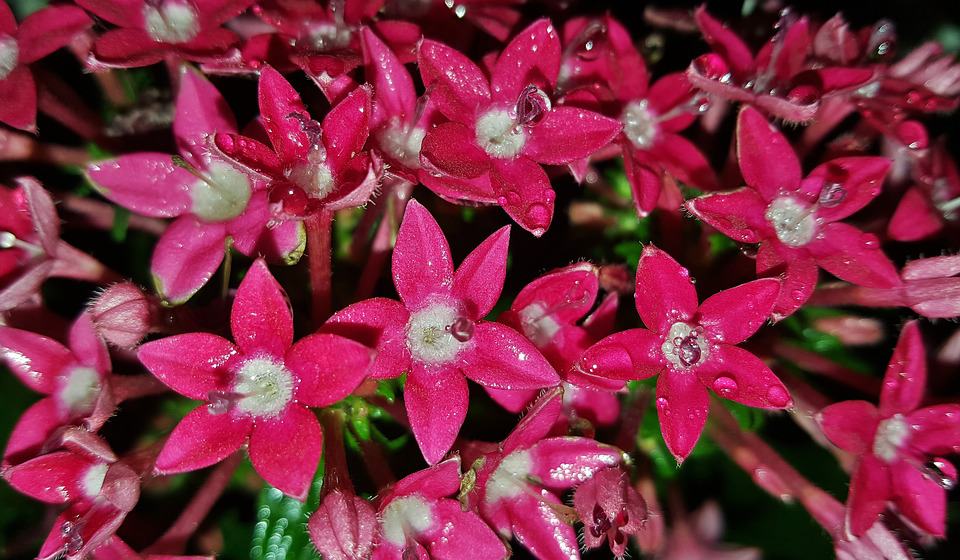
Pentas is one of the best butterfly-attracting plants around. It blooms all summer long, even during the hottest weather, with large clusters of starry blooms that attract butterflies by the dozens as well as hummingbirds.
- Plant in full sun.
- Needs moist, well-drained soil.
- Grows in zones 10-11.
Dahlia
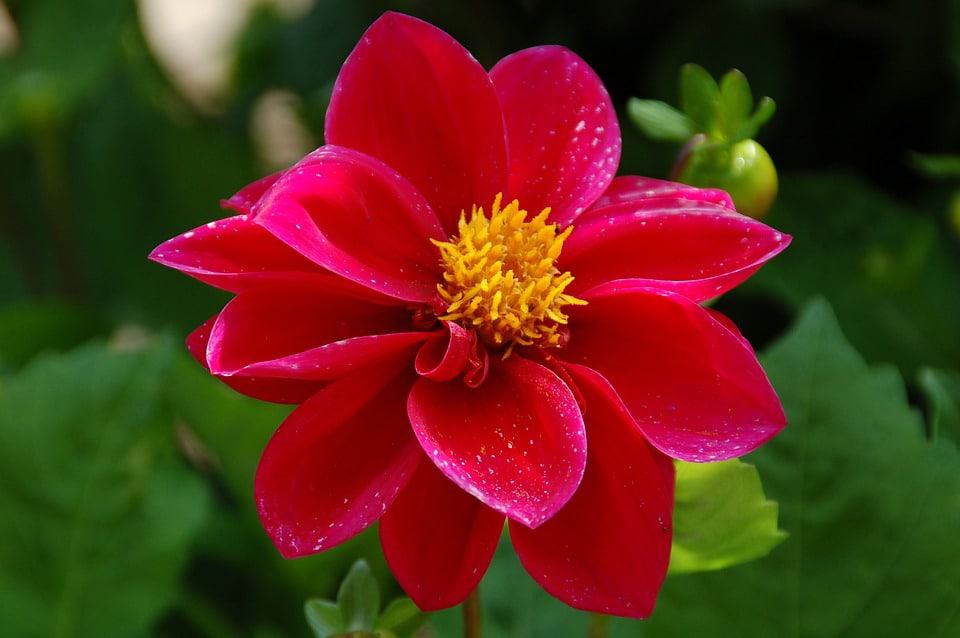
These flowers are planted in the spring after the last frost for a summer display of large, multi-petaled blooms. Dig them up and store them after the first few frosts.
- Plant in full sun.
- Needs moist, well-drained soil.
- Grows in zones 8-10.
Columbine
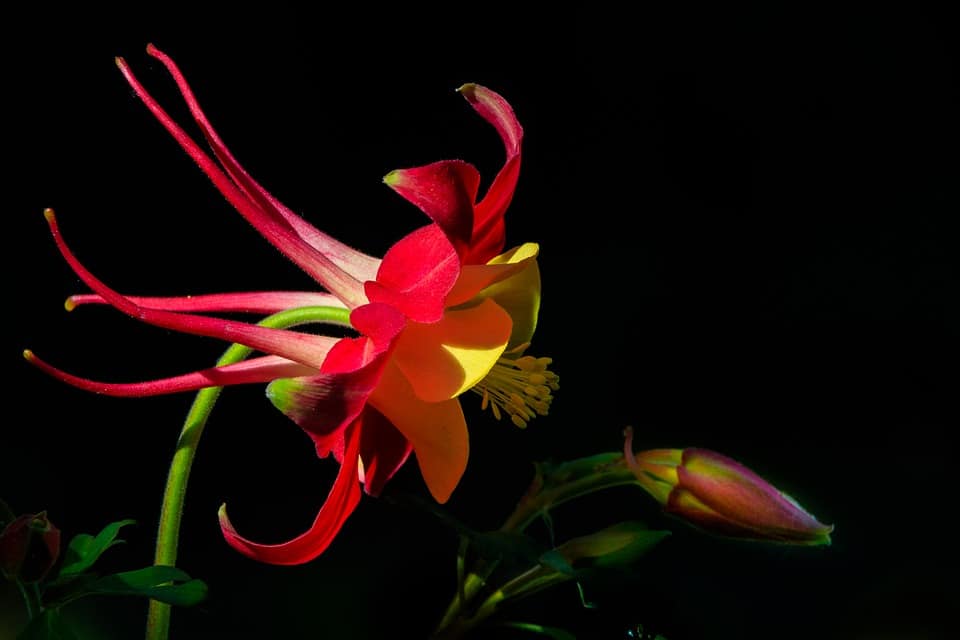
Although these flowers are short lived, when they do bloom they are a stunning addition to any garden as they come in call colors of the rainbow.This flower is perfect if you want to attract hummingbirds to your garden.
- Plat in full sun or partial shade.
- Needs well-drained soil.
- Grow in zones 3-8.
Camellia
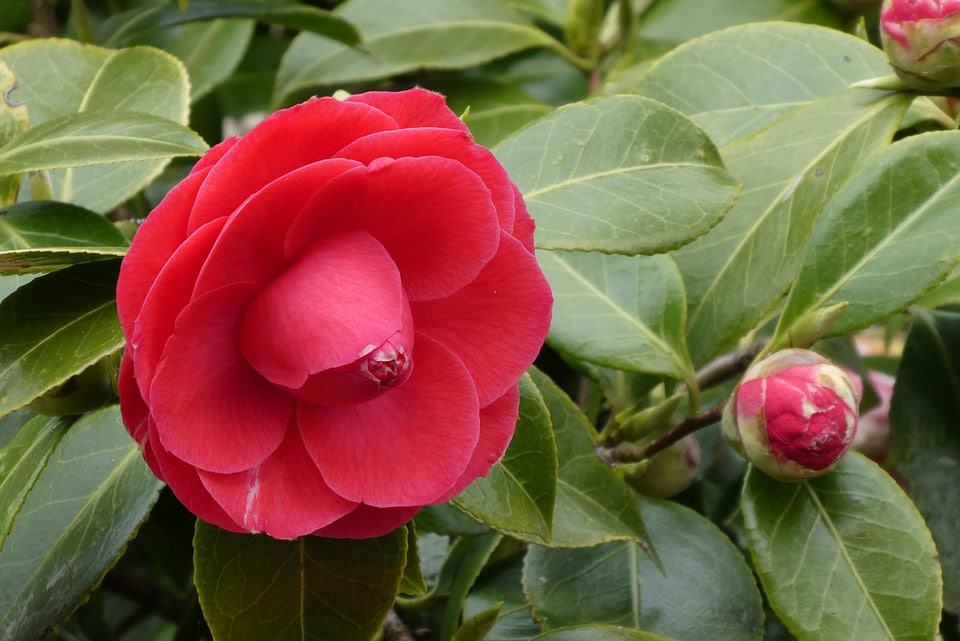
If you’re lucky enough to live in a temperate region, though, make a place for these in your yard. The fragrant flowers, which range from red to pink to white are 2 to 5 inches wide and bloom in the winter.
- Plant in full sun or partial shade.
- Needs moist, well-drained soil.
- Grows in zones 7-9.
Red Sunflower
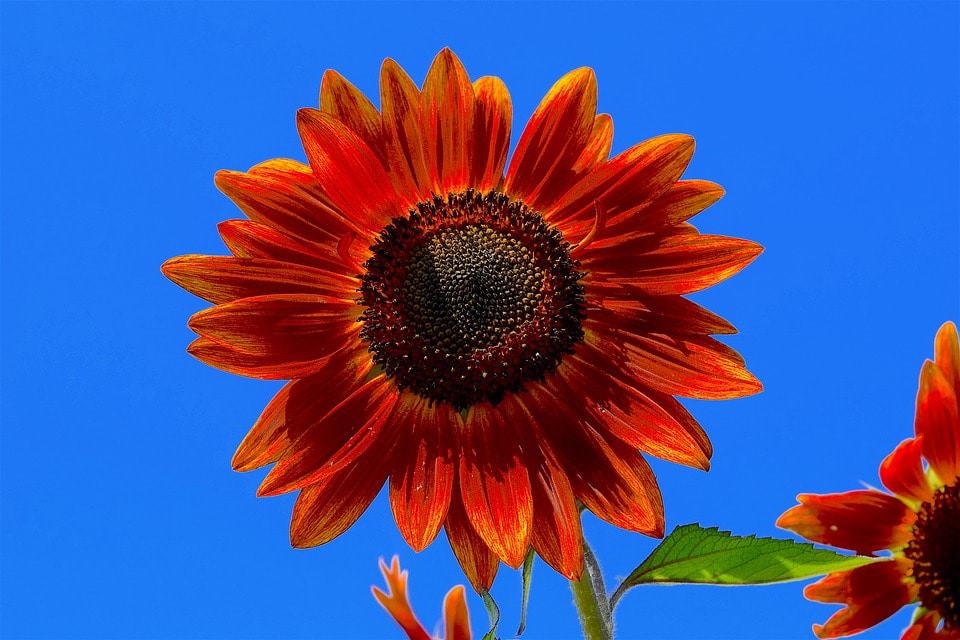
Red sunflowers are exactly like yellow sunflowers, except for their fiery red color. They are perfect as part of a fall centerpiece.
- Plant in full sun.
- Needs well-drained soil.
- Grows in zones 3-10.
Hibiscus
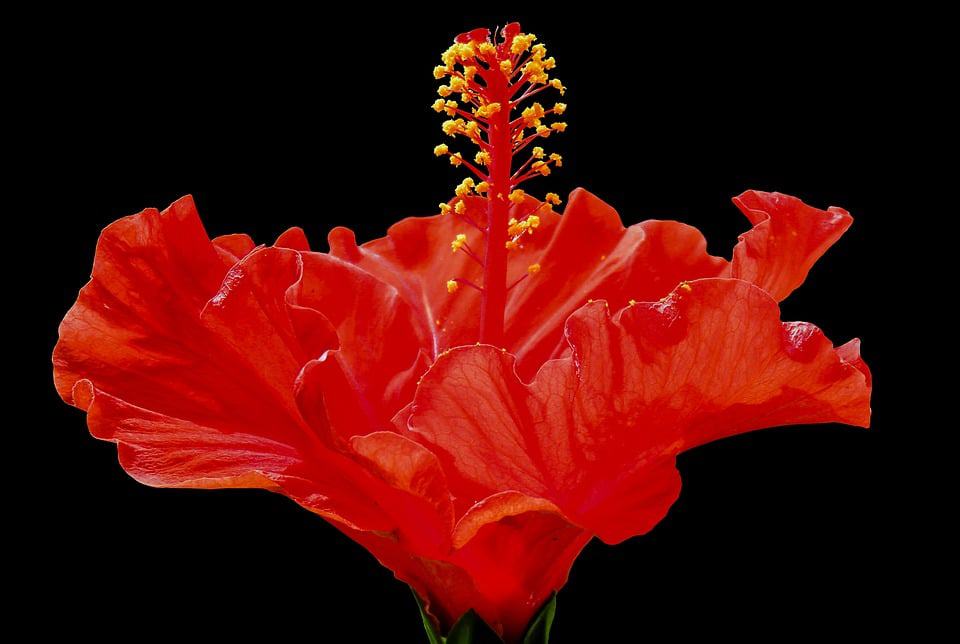
A true showstopper, the hardy hibiscus is sure to wow with its dinner plate-size blossoms. These large-scale herbaceous plants are quick to grow and fill a space, and they add a great tropical feel to any garden setting.
- Plant in full sun or partial shade.
- Needs moist, well-drained soil.
- Grows in zones 5-8.
Perennial Geranium
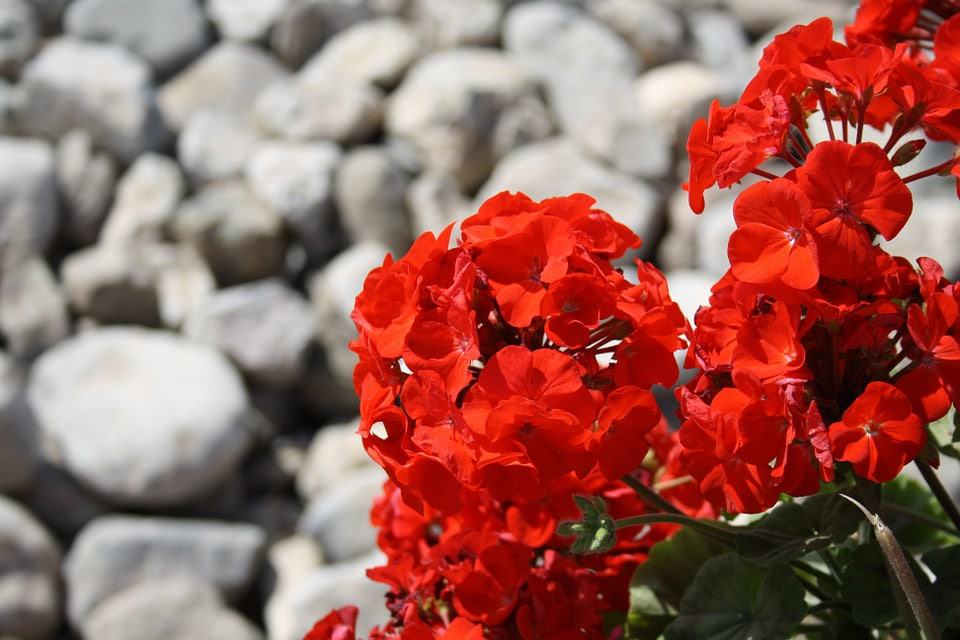
These flowers seed easily and bloom from early summer to early fall. The flowers come in a variety of colors and have a peppery smell.
- Plant in full sun or partial shade.
- Needs moist, well-drained soil.
- Grows in zones 4-8.
Azalea
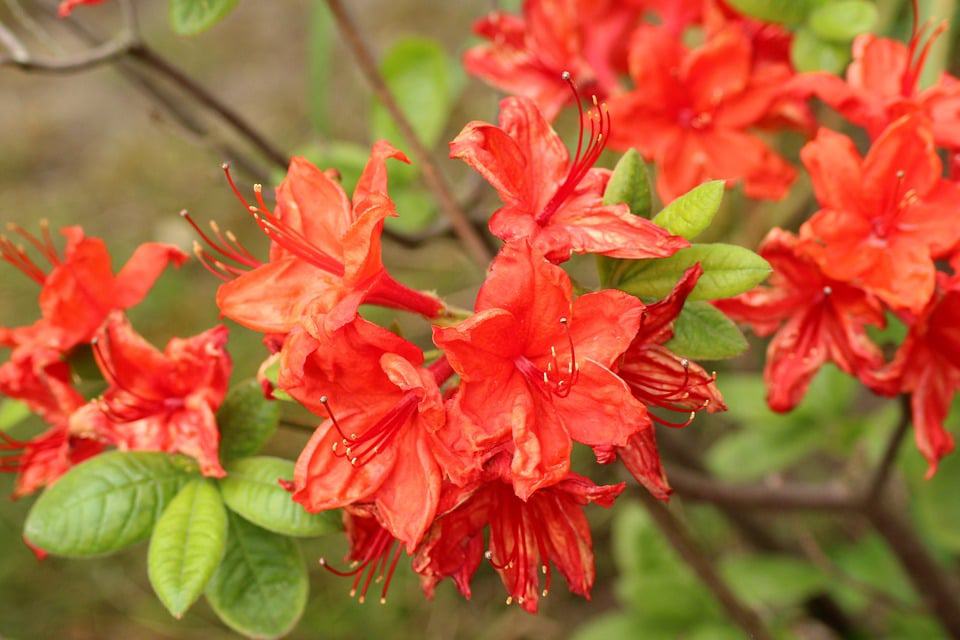
Azaleas are lovely shrubs, with glossy evergreen leaves and brilliant clusters of blossoms. Unfortunately, they are somewhat picky about growing conditions. They require moist, acidic soil and wind protection.
- Plant in partial shade.
- Needs well-drained soil.
- Grows in zones 4-9.
Amaranthus
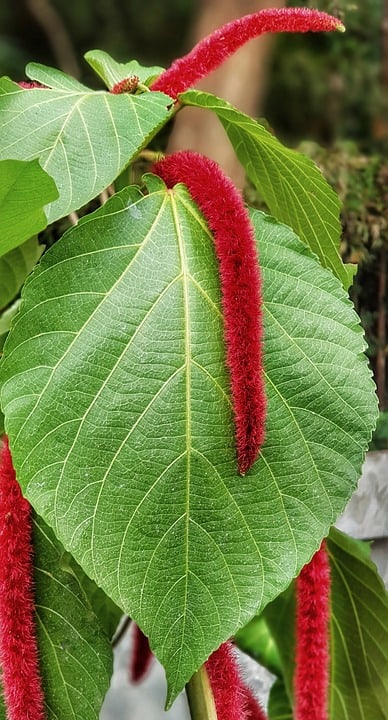
An easy to grow plant with a big garden presence. It is commonly called love-lies-bleeding or tassel flower. Amaranthus gets its unusual common name from the ropelike deep magenta flower stalks.
- Plant in full sun or partial shade.
- Needs moist, well-drained soil.
- Grows in zones 8-11.
Salvia
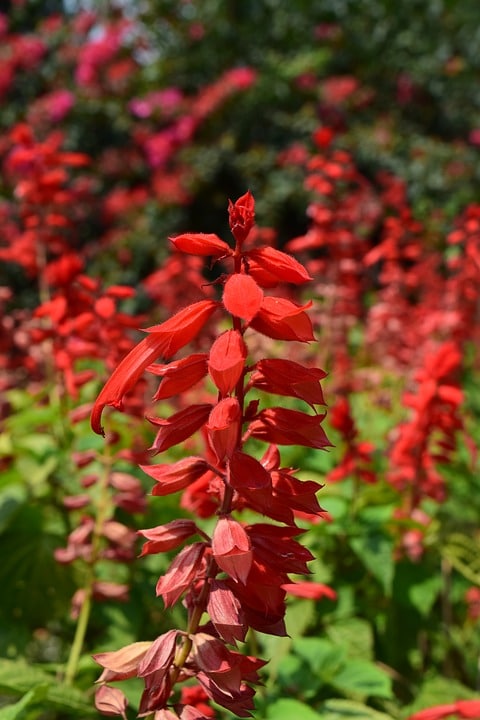
Sometimes confused with lavender from afar, this plant is similar in looks, but does not share the intoxicating scent. Unless your goal is to have fields of salvia, make sure to keep this plant trimmed back because it seeds quickly.
- Plant in Full sun or partial shade.
- Needs well-drained soil.
- Grows in zones 4-9.
Streptocarpus
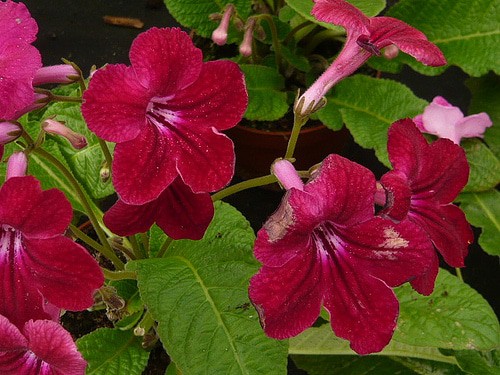
Image source: Gardeners Tips
A popular houseplant that can bloom all year long when kept inside. It comes in many different colors and has beautiful green foliage.
- Plant in full sun or partial shade.
- Needs well-drained soil.
- Grows in zones 9-11.
Sweet Pea
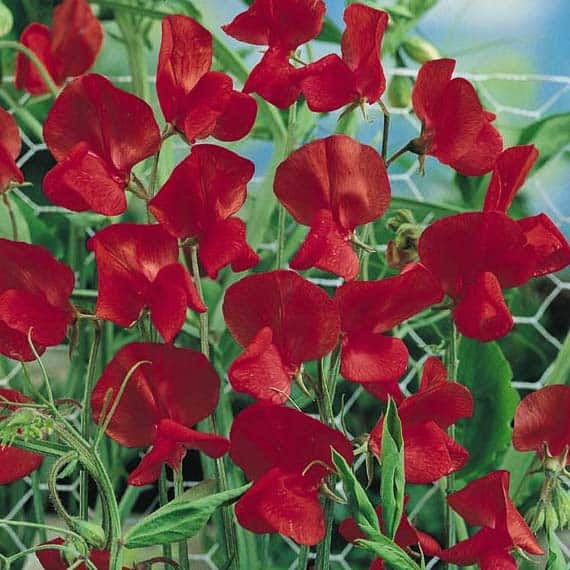
Image source: Swallowtail Garden Seeds
Most commonly used in perfumes, the sweet pea makes a darling addition to any garden. Although they can be hard to grow, once they start they become very hardy and will be stick around for a while.
- Plant in full sun.
- Needs well-drained soil.
- Grows in zones 7-10.
Cosmos
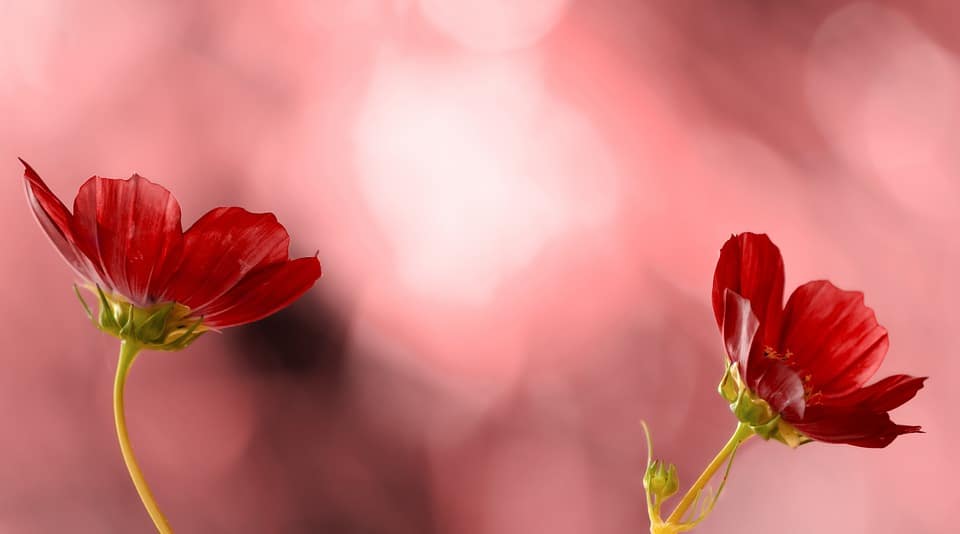
These pretty flowers are commonly planted along side houses and fences due to their tallness. If planting in the middle of the garden make sure to provide a stake for the flowers to grow in order to prevent breaking.
- Plant in full sun.
- Needs well-drained soil
Hyacinth
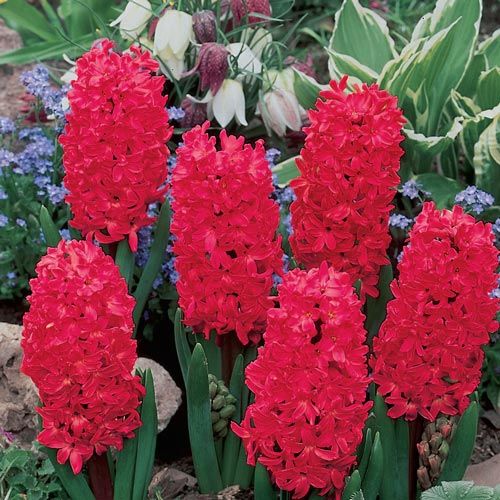
Image source: Breck’s
Hyacinths are spring-blooming bulbs that produce spikes of flowers suitable for cuttings. Their sweet scent is also welcome in an indoor arrangement.
- Plant in full sun or partial shade.
- Needs well-drained soil.
- Grows in zones 4-8.
Canna
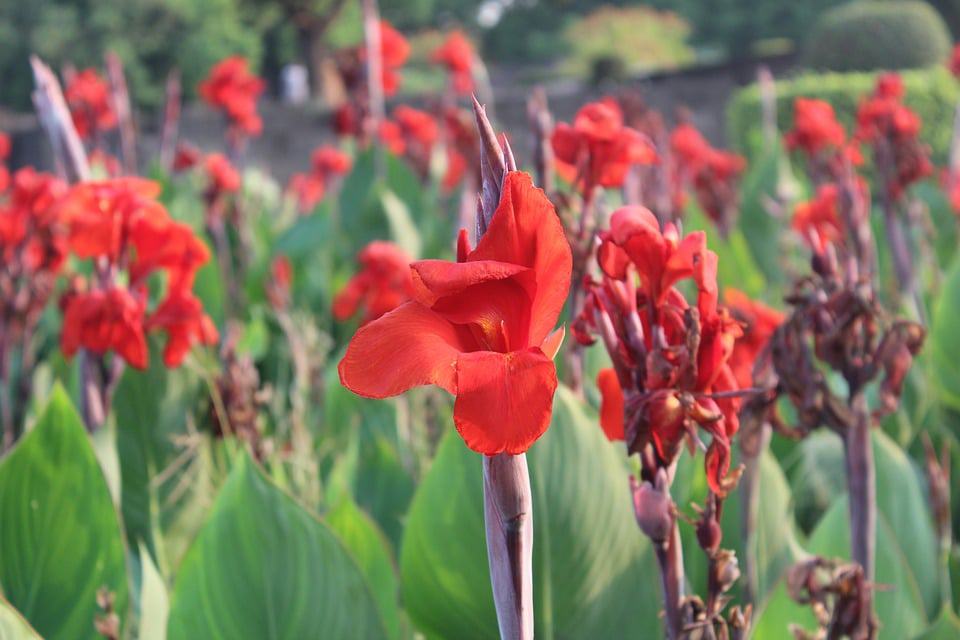
Cannas bring a tropical feel to gardens in all regions. These bold plants feature clustered, flag like blooms in a brilliant color array on tall stems.
*Plant in full sun.
*Needs moist, well-drained soil.
*Grows in zones 8-11.
Clematis
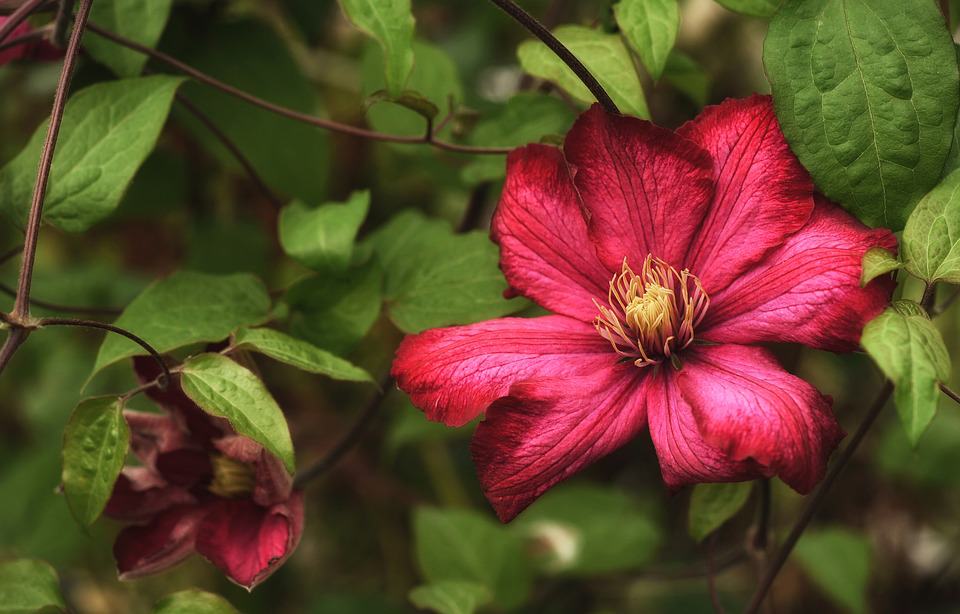
This small flower grows on huge stalks up to 30 feet tall. It is very important to wait until the second year of growing to prune this flower, otherwise it can stunt future growth. For best results cover the soil these are planted in with small flowers or tree bark, to help keep the soil cool.
- Plant in full sun.
- Needs well-drained soil.
- Grows in zones 3-9.
Coneflower
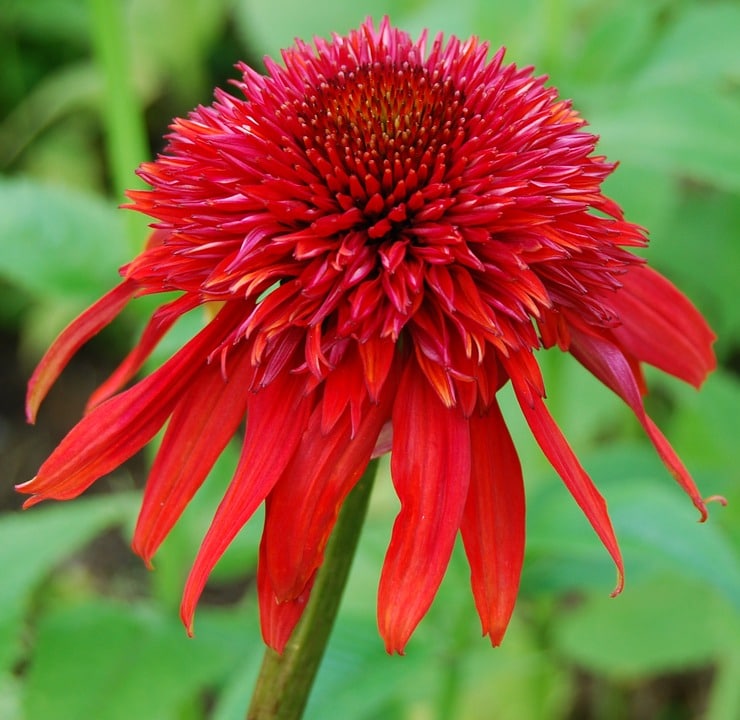
Perfect for hot areas, these purple flowers with vivid orange centers are perfect for gardens and later as a cut flower. When in the garden they are known to attract butterflies and songbirds.
- Plant in full sun.
- Needs well-drained soil.
- Grows in zones 4-9.
Gloxinia
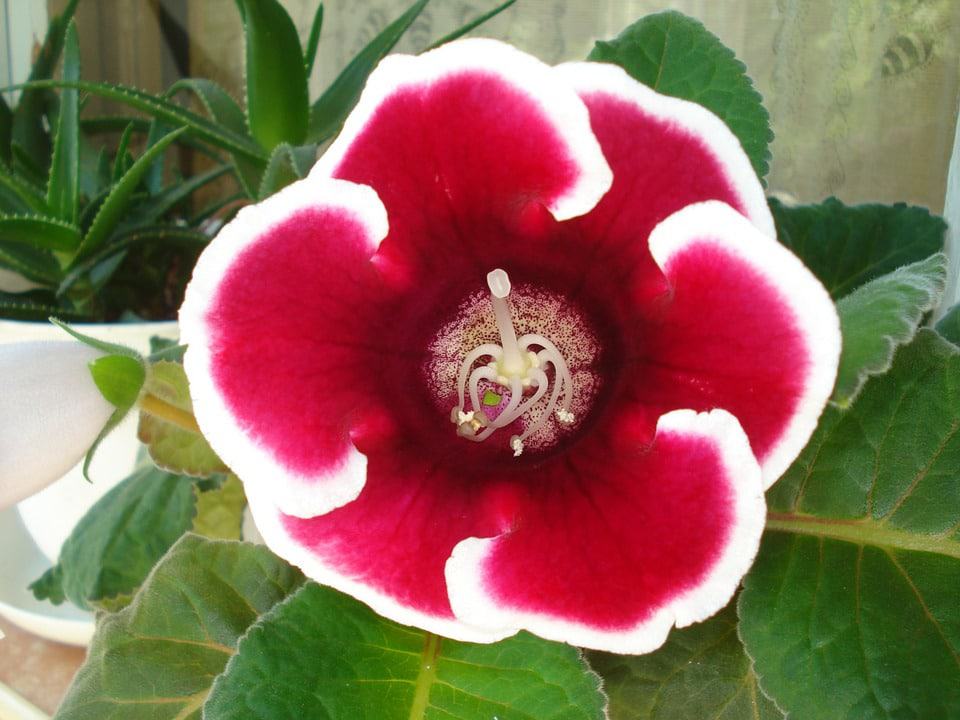
With a bloom that lasts two months, these tiny flowers are perfect for anyone who loves roses as they look like miniature versions. It is important to know that unlike roses, once they die, they need to be replanted as they will never bloom again.
- Plant in partial shade.
- Needs moist, well-drained soil.
- Grows in zones 5-10.
Hellebores
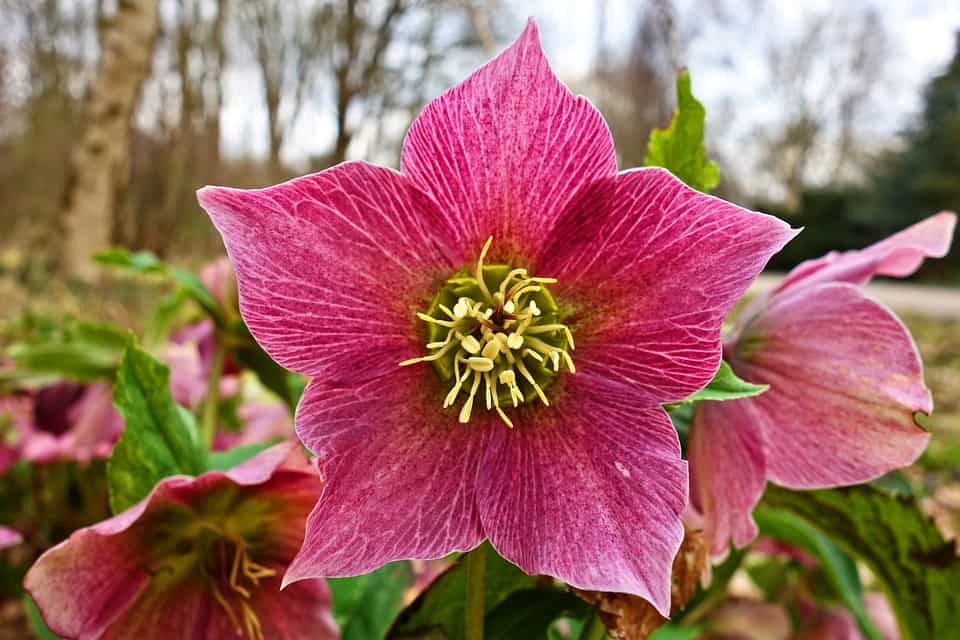
The blooms from a hellebores can bring continued happiness for a long time. They are one of the longest blooming flowers, lasting up to 8 weeks with proper care. They also make fantastic dry flowers, losing only a slight amount of color, but very little shape.
- Plant in full sun or partial shade.
- Needs well-drained soil.
- Grows in zones 4-8.
Lycoris
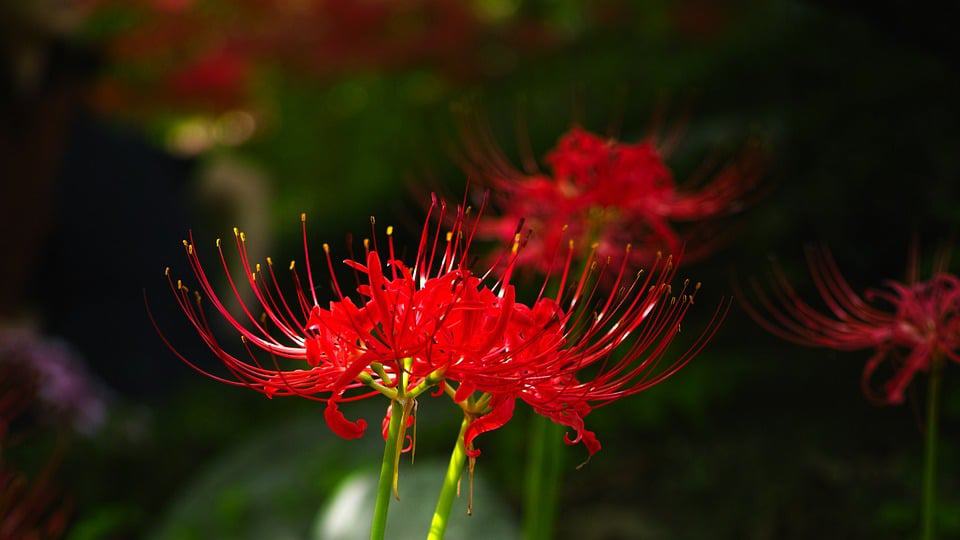
This odd blooms almost resemble an upside down spider. The blooms will last late into summer. Because of their odd look and lack of noticeable petals they are often called naked ladies.
- Plant in full sun.
- Needs well-drained soil.
- Grows in zones 5-10.
Verbena
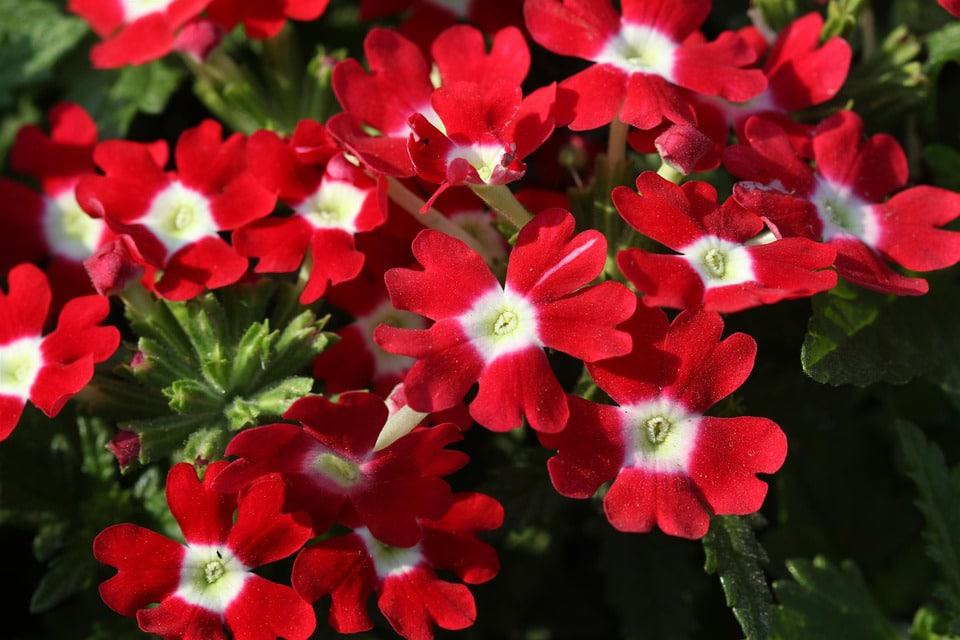
Verbena is a beautiful plant that produces small red blooms all summer long. The flowers are traditionally used in floral arrangements, this flower is also lovely when dried.
- Plant in full sun.
- Needs moist, well-drained soil.
- Grows in zones 9-11.
Daylily
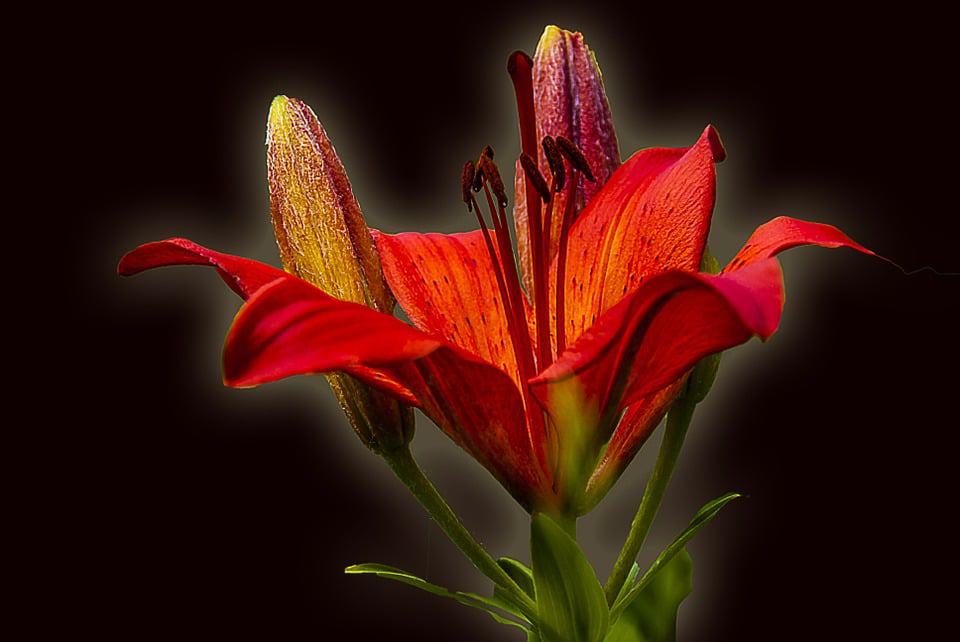
Lilies are often found growing along ditches and in fields, a testament to their low-maintenance style. Their large blooms make them very popular in spring time floral arrangements.
- Plant in full sun or partial shade.
- Needs moist, well-drained soil.
- Grows in zones 4-8.
Prickly Pear
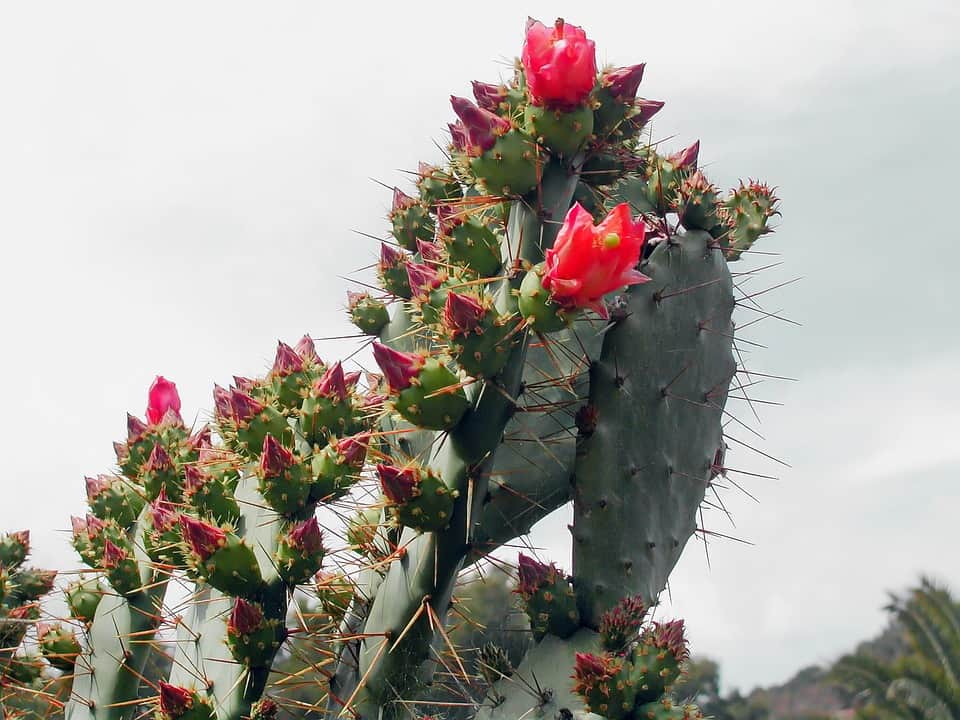
Prickly pear cacti include some of the few hardy species for cold-climate gardeners. The plants are known for their spiny, paddle-shape leaves and colorful summertime cup-shape flowers.
- Plant in full sun.
- Needs well-drained soil.
- Grows in zones 9-11.
Ranunculus
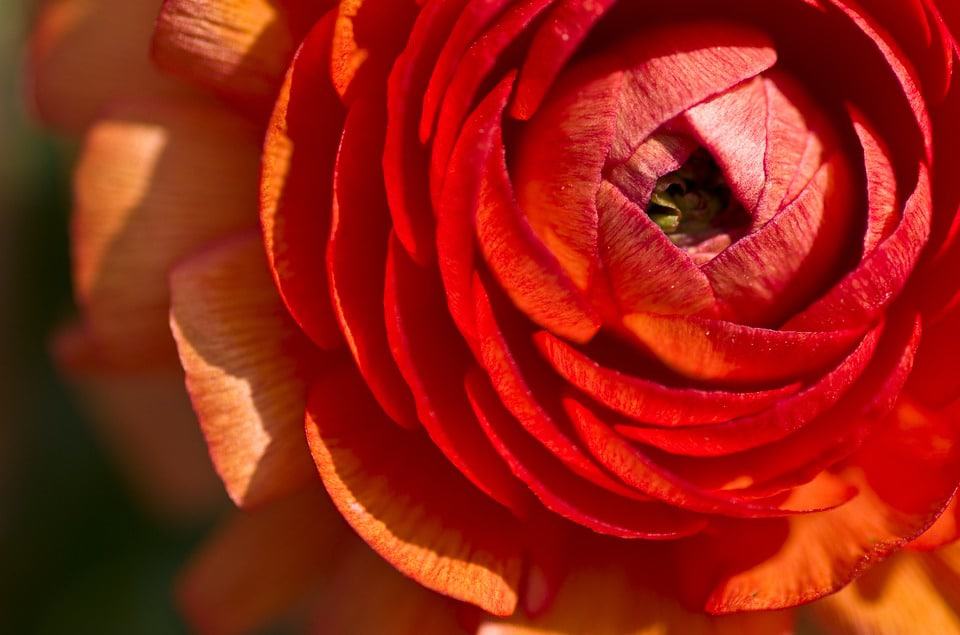
These blooms are loaded with petals. They come in many colors and are perfect in a bouquet because they are able to survive as cut flowers for a week or two.
- Plant in full sun.
- Needs well-drained soil.
- Grows in zones 8-11.
Frequently asked questions about red flowers
What are the red Christmas flowers?
The red flowers commonly seen around Christmas are known as Poinsettias. They are originally from Mexico, where they have been associated with Christmas since the 16th century.
What kind of flowers are red?
Red is a popular color for flowers, but some of the most popular ones are:
- Roses
- Poinsettias
- Peonies
- Dahlias
- Begonias
- Daylilies
Many other flowers are red and often signify passion or romance.
Why do hummingbirds like red flowers?
Hummingbirds have more cones in their eyes that contain red pigments, so for hummingbirds, red is the brightest color. They are attracted to these bright colors and seek them out, leading them to bright red flowers for nectar. This is also why people decide to often make hummingbird feeders bright red.
What are the red flowers the British wear?
The British often wear a red flower on their lapels known as the “Remembrance Poppy.” These flowers are artificial, commonly made of cotton or silk, and are worn to remember and honor fallen soldiers.
What kind of cactus has red flowers?
The most common kind of cactus with red flowers is the Moon Cactus, also known as the Red Ruby Ball Cactus. This is not the only kind of cactus that has red flowers though, as the Kingcup Cactus, Claret Cup Cactus, and Matucana Cactus have red flowers as well.
We hope you’ve enjoyed this post about red flowers. Learn the names of flowers and more on FlowerGlossary.com
